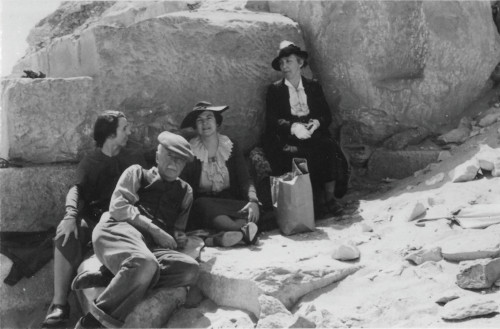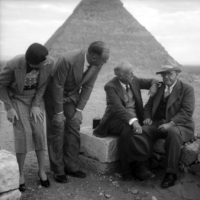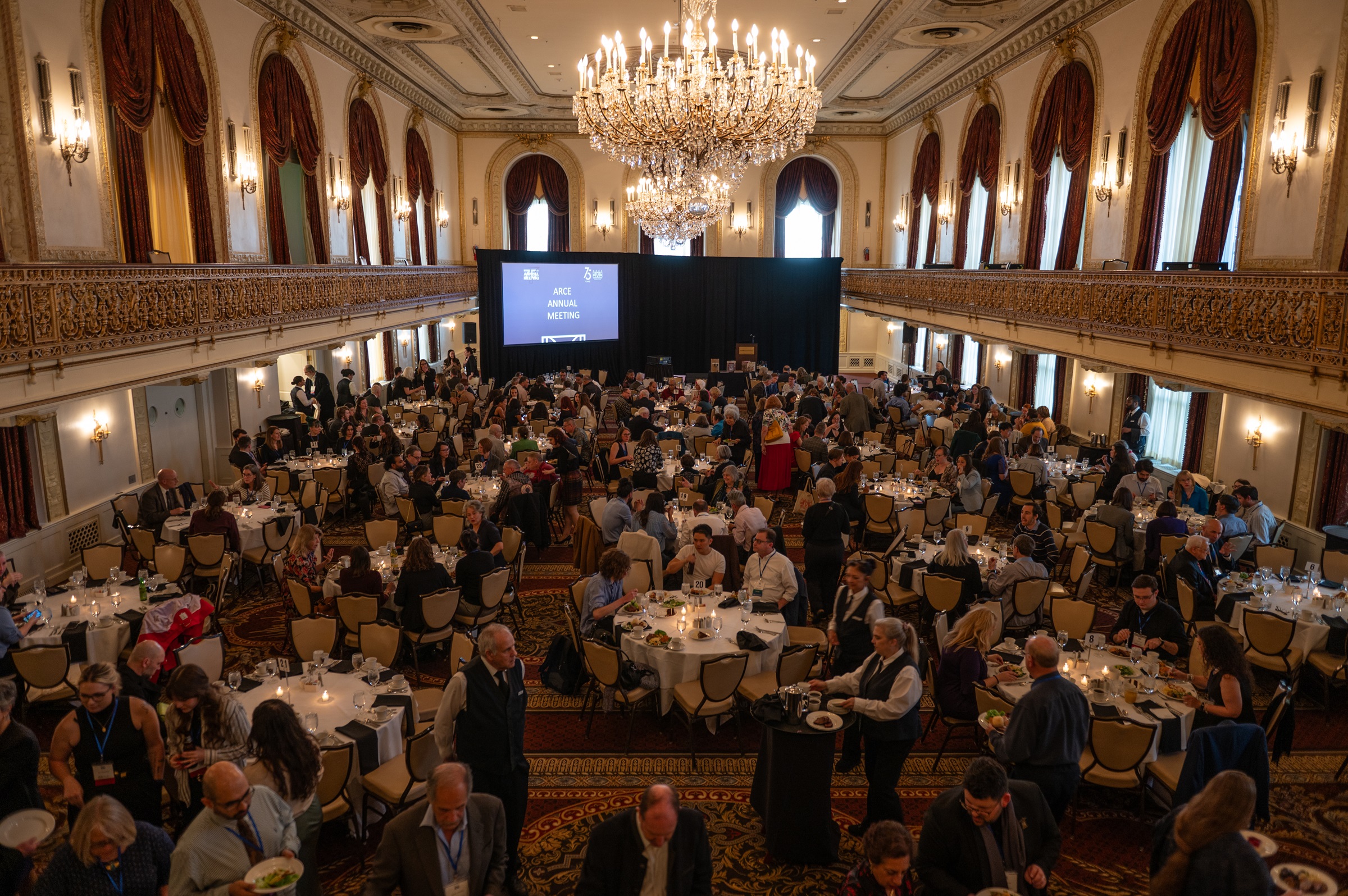ARCE History
ARCE was formally established in Boston on May 14, 1948, at a meeting presided over by Harvard’s Edward W. Forbes and Archaeological Institute of America President Sterling Dow. It was attended by some of the era’s most distinguished Egyptological scholars and institutional leaders. This meeting was prompted by a growing sense, in the years immediately following World War II, of a great need to establish an official “presence” for North American scholars in Egypt. During the early part of the twentieth century, leading American archaeological institutions had conducted major excavations in Egypt, but there was no central office in Cairo supporting the fieldwork or research associated with these institutions.
ARCE was formally incorporated under the laws of the Commonwealth of Massachusetts in 1950, and the Cairo Center was opened in 1951, using temporary space in a small office within the U.S. Office of Information and Educational Exchange.
The founding members of ARCE understood that in the postwar era, Americans were seeking a greater knowledge of the Arab world, of which Cairo was the cultural center. The Center’s scope soon broadened to cover the study of medieval and modern, as well as ancient Egypt. At the 1957 annual meeting, Edward Forbes put it thus:
“The trustees of the Center believe that an institution such as the Center, entirely divorced from politics or sectarianism and devoted solely to scholarly aims, is one of the best means of promoting scholarship at home and adding to American pres-tige abroad; they also believe that it can be an important factor in bringing about a better understanding of the United States in the Middle East, and as such, can be an instrument of peace.”
-ARCE Newsletter No. 26, December 1957
Gradually, the Cairo Center began to offer to members and other interested parties more services, such as producing photographs of significant sites and monuments, helping identify accommodations for visiting members and hosting a variety of scholarly lectures. The 1950s saw considerable political upheaval in Egypt with the 1952 revolution and the 1956 Suez War, but, with the exception a short time in 1956, the ARCE director remained in Cairo.
With the arrival of the 1960s, ARCE began to develop into a more formal institution. In 1962, encouraged and aided by the U.S. Department of State, ARCE joined an expanded and more structured consortium and was charged with managing and distributing over $500,000 a year in Food for Peace (Public Law 480) funds. ARCE also received a “note of recognition” from the Egyptian Government by the Ministry of Culture and National Guidance.
To learn More About ARCE’s Efforts In Preserving Egypt’s Cultural Heritage, Watch This Video
More ARCE History:
Read Sterling Dow’s account of ARCE’s founding>>
Read about the letter that changed Egyptology>>
Listen to Ben Harer talk about his decades with ARCE >>


